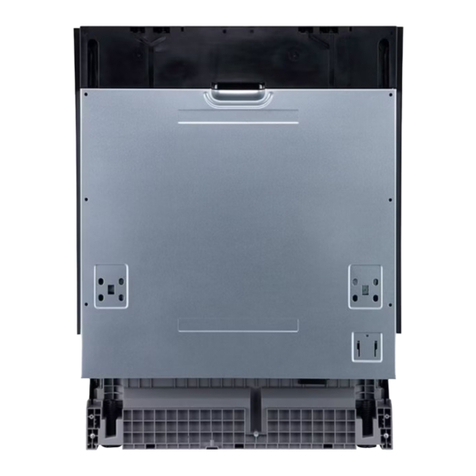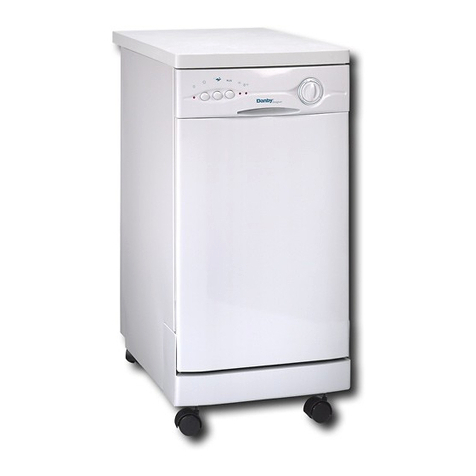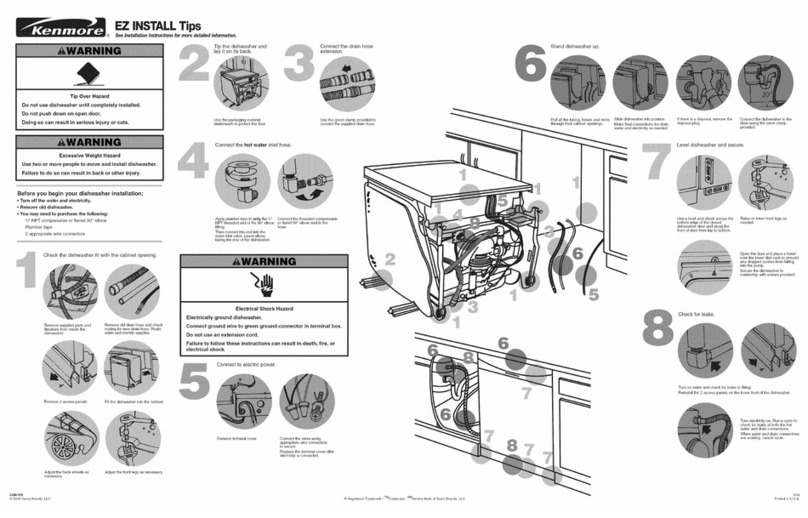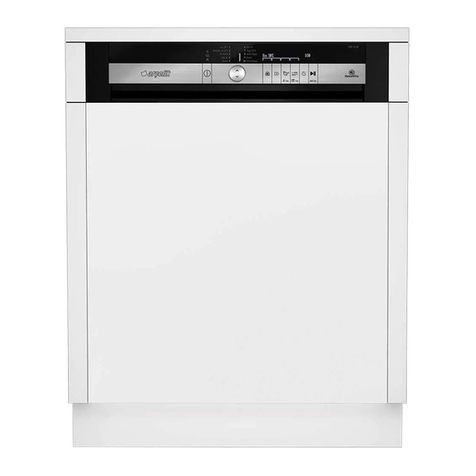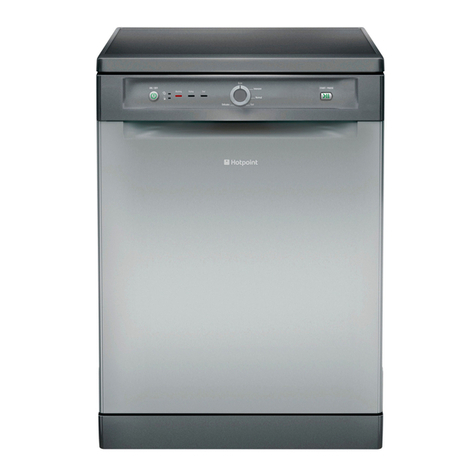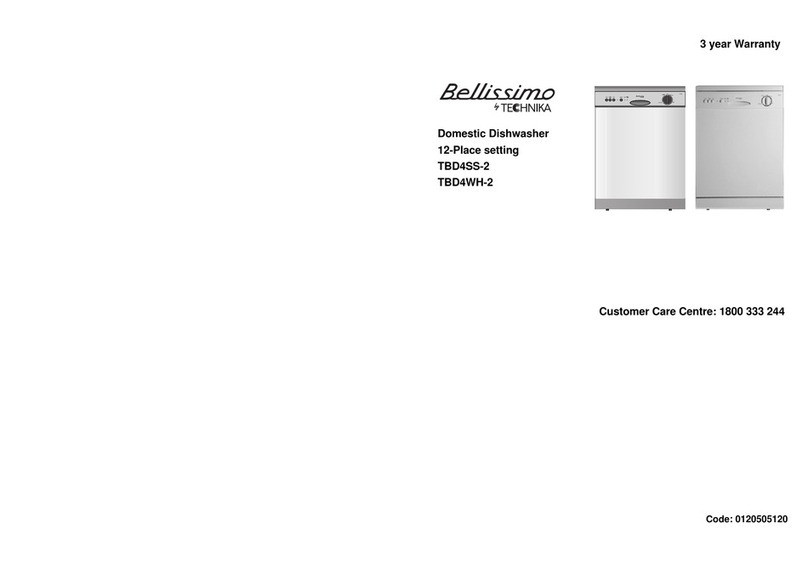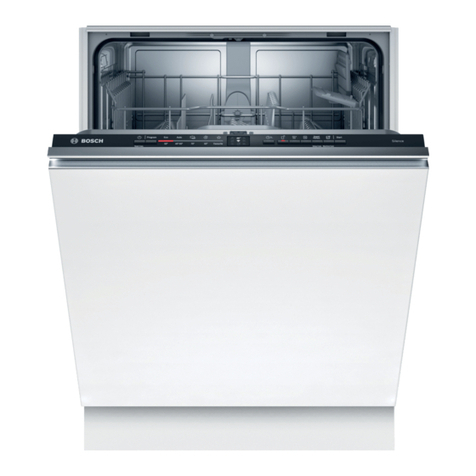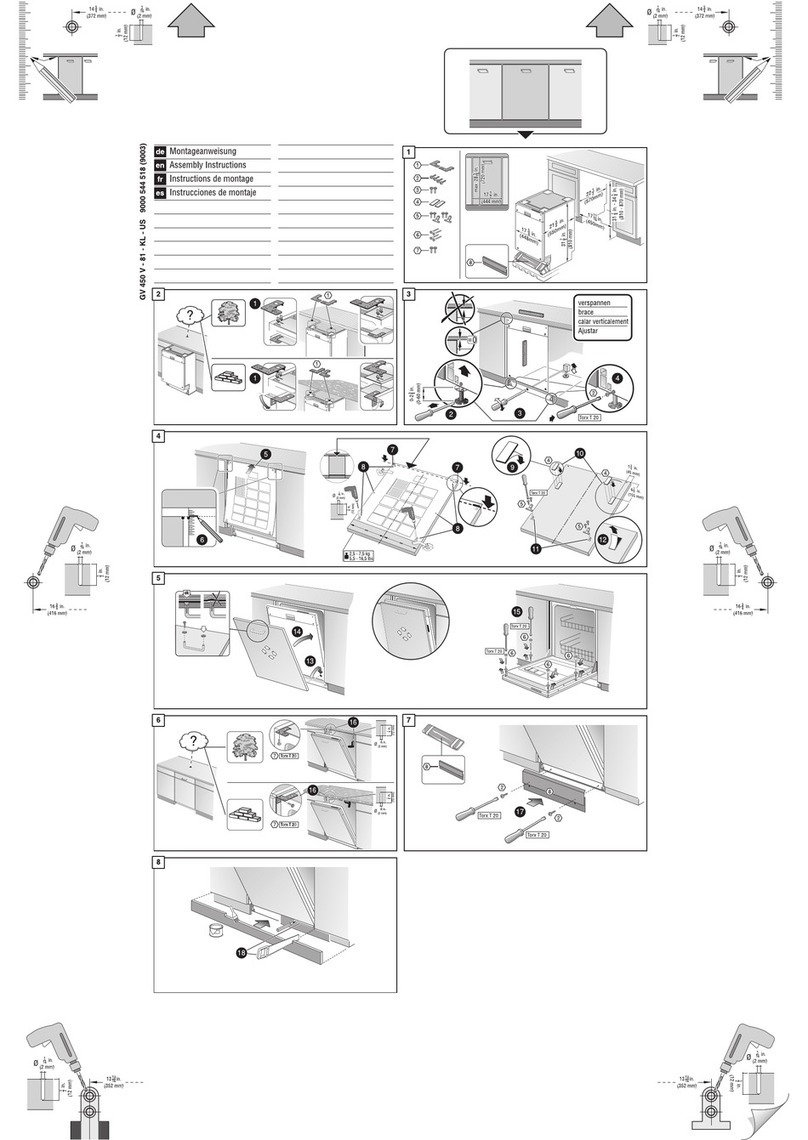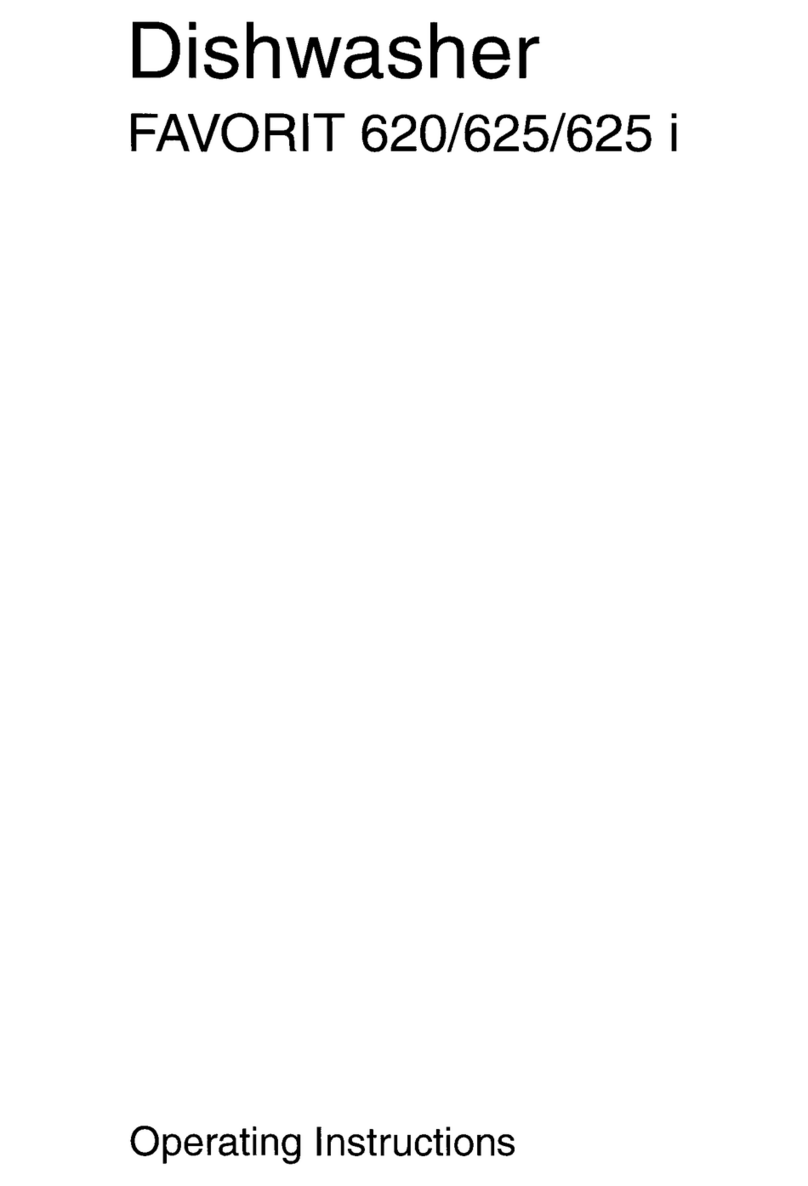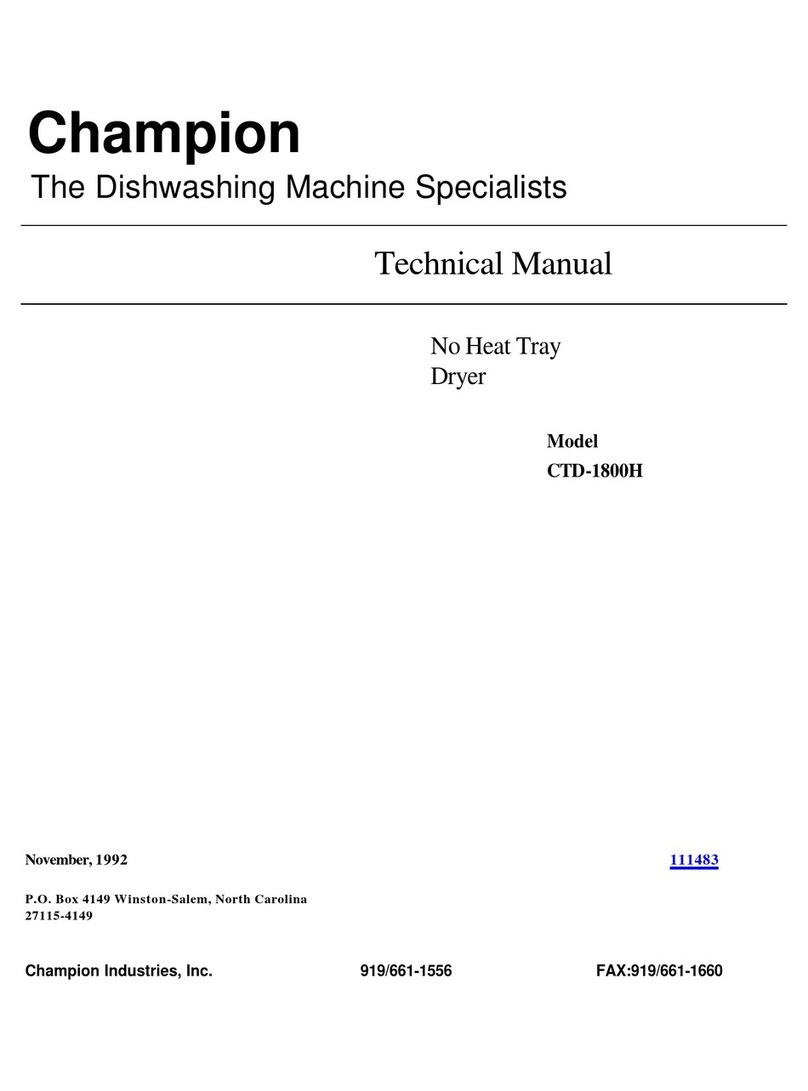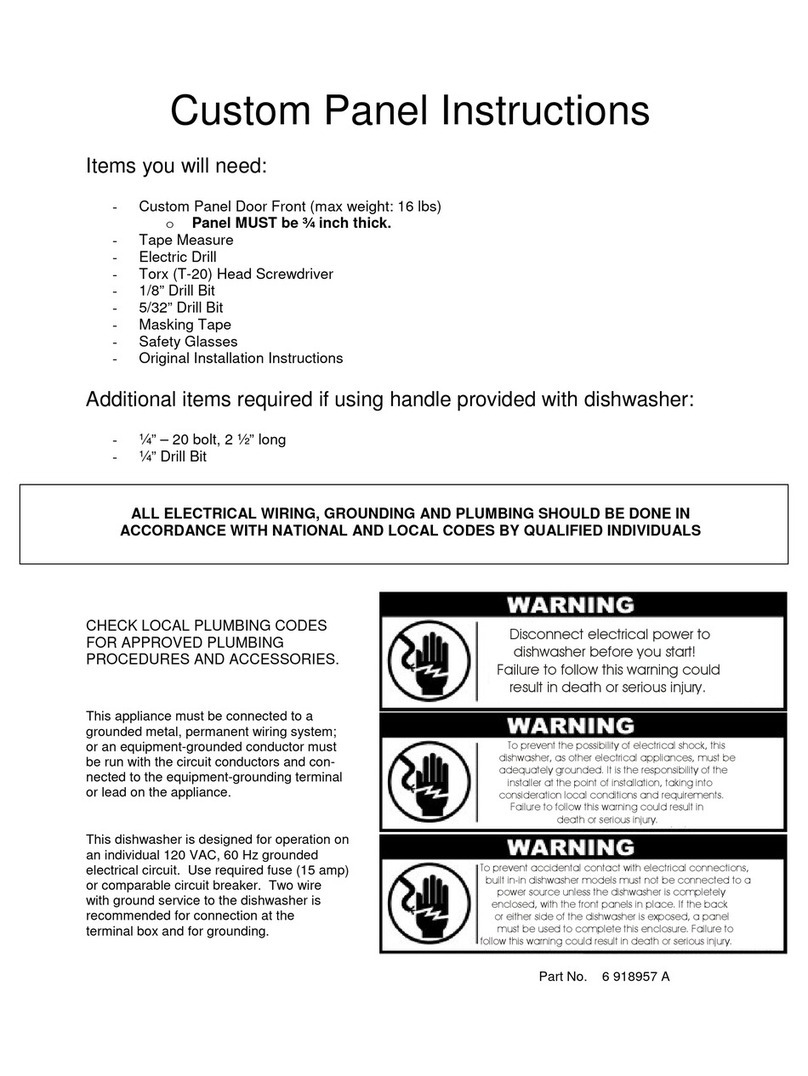HIGH ONE 10S49 E W701T User manual

972914 - 10S49 E W701T
ELECTRO DEPOT
1 route de Vendeville
59155 FACHES-THUMESNIL - FRANCE
EN
WARRANTY CONDITION
This product is guaranteed for a period of 2 years from the date of purchase* against
any failure resulting from a manufacturing or material defect. This warranty does not
cover defects or damage resulting from incorrect installation, improper use or abnormal
wear of the product.
*as shown on the sales receipt.
FR
CONDITION DE GARANTIE
Ce produit est garanti pour une période de 2 ans à partir de la date d’achat*, contre
toute défaillance résultant d’un vice de fabrication ou de matériau. Cette garantie ne
couvre pas les vices ou les dommages résultant d’une mauvaise installation, d’une
utilisation incorrecte ou de l’usure anormale du produit.
*sur présentation du ticket de caisse.
NL
GARANTIEVOORWAARDEN
Dit product wordt gegarandeerd voor een periode van 2 jaar vanaf de aankoopdatum*,
voor elke storing die het gevolg is van een fabricagefout of het materiaal. Gebreken of
schade door slechte installatie, onjuist gebruik of abnormale slijtage van het product
worden niet gedekt door deze garantie.
*op vertoon van kassabon.
ES
CONDICIONES DE GARANTÍA
El certificado de garantía de este producto tiene una duración de 2 años a partir de la
fecha de compra* que se limita a los defectos de fabricación y averías del material.
Se excluyen de la garantía deficiencias o daños originados por una mala instalación,
errores en la manipulación o por un uso inadecuado.
*previa presentación del comprobante de compra.
INSTRUCTIONS FOR USE .....................02
CONSIGNES D'UTILISATION .....................38
GEBRUIKSAANWIJZINGEN .....................74
INSTRUCCIONES DE USO ...................112
01/2022 - V2
Dishwasher
Lave-vaisselle
Vaatwasmachine
Lavavajillas

1
2
3
4
5
67
10
98
11
12
13

2 3
FR FR
Aperçu de l’appareil
A A
3
Table of contents
AOverview of the
appliance
CUseful information
BUsing the appliance Installation
Before using the appliance
Loading your dishwasher
Programme table
The control panel
Cleaning and maintenance
Troubleshooting
Automatic fault warnings and what to do
Description of the appliance
2
Thanks!
Thank you for choosing this HIGHONE product.
Chosen, tested and recommended by ELECTRO DEPOT,
HIGHONE branded products are easy to use, reliable,
and of an impeccable standard.
With every use of this appliance, you can be sure of
complete satisfaction.
Welcome to ELECTRO DEPOT.
Visit our website: www.electrodepot.fr
EN EN

5EN
Using the appliance
B
4EN
Preview of the appliance
A
Description of the appliance
General appearance
1Worktop
2Upper basket with racks
3Upper spray arm
4Lower basket
5Lower spray arm
6Filters
7Rating plate
8Control panel
9Detergent and rinse-aid dispenser
10 Cutlery basket
11 Salt dispenser
12 Upper basket track latch
13 Mini Active Drying Unit:
This system provides better drying performance for your dishes.
Technical specifications
Capacity 10 place settings
Dimensions Height
Width
Depth
850 (mm)
448 (mm)
598 (mm)
Net weight 38,300 kg
Operating voltage / frequency 220-240V / 50 Hz
Total current (A) 10(A)
Total power (W) 1900(W)
Water supply pressure Maximum: 1 (Mpa)
Minimum: 0.03 (Mpa)
Machine positioning
• When positioning the machine, place it in an area where dishes can be easily loaded and
unloaded. Do not put the machine in an area where the ambient temperature falls below 0°C.
• Read all warnings located on the packaging before removing the packaging and positioning
the machine.
• Place the machine close to a water tap and drain. Take into consideration that the connections
will not be altered once the machine is in position.
• Do not hold the machine by its door or panel.
• Leave an adequate distance around the machine to allow ease of movement when cleaning.
WARNING
Ensure the water inlet and outlet hoses are not squeezed
or trapped and that the machine does not stand on the
electrical cable while positioning.
• Adjust the feet so the machine is level and balanced. The machine should be placed on
flat ground otherwise it will be unstable and the door of the machine will not close properly.
Water connection
We recommend fitting a filter to your water inlet supply in order to prevent damage to your
machine due to contamination (sand, rust, etc.) from indoor plumbing. This will also help
prevent yellowing and deposit formation after washing.
Installation

6 7
EN EN
Using the appliance Using the appliance
B B
NOTE PRINTING ON THE WATER INLET HOSE!
If models are marked with 25°, the water temperature may
be max. 25 °C (cold water).
For all other models:
Cold water preferred; hot water max. temperature 60 °C.
Water inlet hose
WARNING
• Use the new water inlet hose supplied with your machine,
do not use an old machine’s hose.
• Run water through the new hose before connecting.
• Connect the hose directly to the water inlet tap. The
pressure supplied by the tap should be a minimum of
0.03MPa and a maximum of 1 MPa. If the pressure exceeds
1MPa, a pressure relief valve must be fitted between the
connection.
WARNING
• After the connections are made, turn the tap on fully and
check for water leaks. Always turn off the water inlet tap
after a wash program has finished.
WARNING
An Aquastop water spout is available with some models.
Do not damage it or allow it to become kinked or twisted.
Drain Hose
max 110cm
min 50cm
min 4cm
Connect the water drain hose directly to water drain hole or to the sink outlet spigot. This
connection should be minimum 50 cm and maximum 110 cm from flor plane.
IMPORTANT
Items will not wash properly if a drain hose longer than
4m is used.

8 9
EN EN
Using the appliance Using the appliance
B B
0.5 -
1.1m
Electrical connection
WARNING
Your machine is set to operate at 220-240 V. If the mains
voltage supply to your machine is 110 V, connect a
transformer of 110/220 V and 3000 W between the electrical
connection.
WARNING
Connect the product to a grounded outlet protected by a fuse
complying with the values in the «Technical Specifications»
table.
The earthed plug of the machine must be connected to an
earthed outlet supplied by suitable voltage and current.
In the absence of earthing installation, an authorised
electrician should carry out an earthing installation. In
the case of use without earthing installed, we will not be
responsible for any loss of use that may occur.
The plug on this appliance may incorporate 13A fuse
depending on the target country. (For example UK, Saudi
Arabia)
Fitting the machine undercounter
If you wish to fit your machine undercounter, there must be sufficient space to do so and the
wiring-plumbing must be suitable to do so 1. If the space under the countertop is suitable
for fitting your machine, remove the worktop as shown in the illustration 2.
WARNING
The countertop, which the machine will be placed under,
must be stable in order to prevent imbalance.
The top panel of the dishwasher must be removed to fit the
machine under the countertop.
To remove the top panel, remove the screws that hold it on,
located at the rear of the machine. Then, push the panel
1 cm from the front towards the rear and lift it. Adjust the
machine feet according to the slope of the floor 3.
Fit your machine by pushing it under the counter taking
care not to crush or bend the hoses 4.
WARNING
After removing the top panel of your dishwasher, the
machine should be placed in a space of the dimensions
shown in the figure below.

10 11
EN EN
Using the appliance Using the appliance
B B
H
H
min. 598
460
448
598
1
2
3
4
A B
All Products B1B2
Product’s Height
(±2 mm) 820 mm 825 mm 835 mm
Before using the appliance
Preparing your dishwasher for first use
• Make sure the electricity and supply water specifications match the values indicated in the
installation instructions for the machine.
• Remove all packaging material inside the machine.
• Set the water softener level.
• Fill the rinse aid compartment.
Salt usage (IF AVAILABLE)
• For a good washing function, the dishwasher needs soft, i.e. less calcareous water. Otherwise,
White lime residues will remain on the dishes and the interior equipment. This will negatively
affect your machine’s washing, drying and shining performance. When water flows through
the softener system, the ions forming the hardness are removed from the water and the water
reaches the softness required to obtain the best washing result. Depending on the level of
hardness of the inflowing water, these ions that harden the water accumulate rapidly inside the
softener system. Therefore, the softener system has to be refreshed so that it operates with
the same performance also during the next wash. For this purpose, dishwasher salt is used.
• Machine can only be used by special dishwasher salt to soften the water. Do not use any
small grained or powdered type of salts which can easily soluble. Using any other type of salt
can damage your machine.

12 13
EN EN
Using the appliance Using the appliance
B B
Fill the salt (IF AVAILABLE)
To add softener salt, open the salt compartment cap by turning it counter clockwise.
1
2
At first use, fill the compartment with 1 kg salt and water 3until it is almost overflowing. If
available, using a funnel 4will make filling easier. Replace the cap and close it. After every
20-30 Cycles add salt into your machine until it fills up (approx. 1 kg).
1 2
3 4
SALT
Only add water to the salt compartment on first use.
• Use softener salt specifically produced for use in dishwashers.
• When you start your dishwasher, the salt compartment is filled with water, therefore put the
softener salt in prior to starting your machine.
• If the softener salt has overflowed and you do not start the machine immediately, run a short
washing program to protect your machine against corrosion.
Test Strip
Run water
through the
tap (1min.)
Keep the
strip in the
water (1sec)
Shake the
strip. Wait (1min.)
Set the
hardness
level of your
machine.
1
munite 1
second 1
munite
1
2
3
4
5
6
NOTE
The level is set to 3 as default. If the water is well water or
has a hardness level above 90 dF, we recommend that you
use filter and refinement devices.
Water Hardness Table
Level German dH French dF British dE Indicator
1 0-5 0-9 0-6 Wash LED is on.
2 6-11 10-20 7-14 Dry LED is on.
3 12-17 21-30 15-21 End button is on.
4 18-22 31-40 22-28 Wash and Dry LEDs are on.
5 23-34 41-60 29-42 Wash and End LEDs are on.
6 35-50 61-90 43-63 Dry and End LEDs are on.
Water Softener System
The dishwasher is equipped with a water softener which reduces the hardness in the mains
water supply. To find out the hardness level of your tap water, contact your water company or
use the test strip (if available).

14 15
EN EN
Using the appliance Using the appliance
B B
Setting
• Turn on the machine by pressing the On/Off button.
• Press the Up button for at least 3” immediately after the machine is turned on.
• Release the Up button when all leds blink once. The last setting level is viewed.
• Press the Up or Down button to increase or decrease the hardness level respectively.
• Turn off the machine to save the setting.
Detergent usage
• Only use detergents specifically designed for domestic dishwashers. Keep your detergents
in cool, dry places out of reach of children.
• Add the proper detergent for the selected program to ensure the best performance. The
amount of detergent needed depends on the cycle, load size, and soil level of dishes.
• Do not fill detergent into the detergent compartment more than required; otherwise you
can see whitish streaks or bluish layers on glass and dishes and may cause glass corrosion.
• Continued use of too much detergent may cause machine damage.
• Using little detergent can result in poor cleaning and you can see whitish streaksin hard water.
• See the detergent manufacturer’s instructions for a further information.
Filling the detergent
• Push the latch to open the dispenser and pour in the detergent.
• Close the lid and press it until it locks in place. The dispenser should be refilled just before
the start of each programme. If the dishes are heavily soiled, place additional detergent in
the pre-wash detergent chamber.
DETERGENT
Using combined detergents
• These products should be used according to the manufacturer’s instructions.
• Never put combined detergents into the interior section or the cutlery basket.
• Combined detergents contain not only the detergent but also rinse-aid, salt replacement
substances and additional components depending on the combination.
• We recommend you do not use combined detergents in short programmes. Please use
powder detergents instead. If you encounter problems when using combined detergents,
please contact the detergent manufacturer.
• When you stop using combined detergents, make sure that water hardness and rinse aid
settings are set to the correct level.

16 17
EN EN
Using the appliance Using the appliance
B B
Rinse-aid usage
• The rinse aid helps to dry the dishes without streaks and stains. Rinse-aid is required for
stain-free utensils and clear glasses. The rinse aid is automatically released during the hot
rinse phase. If rinse aid dosage setting set too low, whitish stains remains on dishes and
dishes do not dry and washed clean.
• If rinse aid dosage setting set too height, you can see bluish layers on glass and dishes.
Filling the rinse-aid and setting
To fill the rinse aid compartment, open the rinse-aid compartment cap. Fill the compartment
with rinse aid to the MAX level and then close the cap. Be careful not to overfill the rinse aid
compartment and wipe up any spills.
In order to change the rinse aid level, follow the below steps before turning on the machine:
• Turn on the machine by pressing the On/Off button.
• Press the Up button for at least 5 seconds immediately after the machine is turned on.
• Release the Up button when all leds blinks twice. The last setting level is displayed.
• Press Up or Down button to increase or decrease the hardness level.
• Turn off the machine to save the setting.
The factory setting is “4”.
If the dishes are not drying properly or are spotted, increase the level. If blue stains form on
your dishes, decrease the level.
Level Brightener Dose Indicator
1 Rinse-aid not dispensed Wash LED is on.
2 1 dose is dispensed Dry LED is on.
3 2 doses are dispensed End LED is on.
4 3 doses are dispensed Wash and Dry LEDs are on.
5 4 doses are dispensed Wash and End LEDs are on.

18 19
EN EN
Using the appliance Using the appliance
B B
Loading your dishwasher
• For best results, follow these loading guidelines.
• Loading the household dishwasher up to the capacity indicated by the manufacturer will
contribute to energy and water savings.
• Manual pre-rinsing of tableware items leads to increased water and energy consumption
and is not recommended.
• You can place cups, glasses, stemware, small plates, bowls, etc. in upper basket.
• Do not lean long glasses against one another or they cannot remain steady and may receive
damage.
• When placing long stem glasses and goblets, lean them against the basket edge or rack
and not against other items.
• Place all containers such as cups, glasses and pots into the dishwasher with the opening
facing downwards otherwise water can collect on items.
• If there is cutlery basket in machine, you are recommended to use the cutlery grid in order
to obtain the best result. Place all large (pots, pans, lids, plates, bowls etc.) and very dirty
items in the lower rack.
• Dishes and cutlery should not be placed above each other.
WARNING
• Take care not to obstruct the rotation of spray arms.
• Make sure after loading the dishes do not prevent opening
the detergent dispenser.
Recommendations
Remove any coarse residue on dishes before placing the dishes in the machine. Start the
machine with full load.
IMPORTANT
Do not overload the drawers or place dishes in the wrong
basket.
WARNING
To avoid any possible injuries, place long-handle and
sharppointed knives with their sharp points facing down
or horizontally on the baskets.
Top basket
Fixed Rack
Upper basket racks have two positions: open
A
and closed
B
. You can place cups on the
racks to be washed. You can also place long forks, knives and spoons on the racks laterally.
A
B

20 21
EN EN
Using the appliance Using the appliance
B B
Upper Basket
Height adjustment
• Turn the Rail Stop Clips, at the ends of the rails, to the sides to open them (as shown in the
image below), then pull out and remove the basket. Change the position of the wheels, then
reinstall the basket to the rail, making sure to close the Rail Stop Clips.
• When the upper basket is in the higher position, large items such as pans can be placed
on the lower basket.
Alternative Basket Loads
Lower Basket
Top Basket
Incorrect Loads

22 23
EN EN
Using the appliance Using the appliance
B B
Important Note for Test Laboratories
For detailed information required for tests according to EN normatives and a softcopy of the
manual, please send the model name and serial number to the following address:
dishwasher@standardtest.info
Incorrect Loads
• Incorrect loading can cause poor washing and drying performance. Please follow the
manufacturer’s recommendations for a good performans result.
Programme table
P1 P2 P3 P4 P5 P6
Program
Name: Prewash Quick 30’ Eco Super 50’ Intensive
65°C
Hygiene
70°C
Type of Soil:
Suitable
to rinse
dishes that
you plan to
wash later.
Suitable
for lightly
soiled
dishes and
quick wash.
Standard
program for
normally
soiled daily
using dishes
with reduced
energy
and water
consump-
tions.
Suitable
for
normally
soiled daily
dishes
with faster
program.
Suitable
for heavily
soiled
dishes.
Suitable
for heavily
soiled
dishes
requiring
hygienic
washing.
Level of Soil: Light Light Medium Medium Heavy Heavy
Amount of
Detergen:
A: 25 cm3
B: 15 cm3
- A A A A A
Program
Duration
(h:min)
00:15 00:30 03:18 00:50 01:57 02:04
Electiricity
consumption
(kWh/cycle)
0.020 0.740 0.755 1.100 1.700 1.900
Water
consumption
(l/cycle)
3.6 10.2 11.0 10.5 17.8 14.8

24 25
EN EN
Using the appliance Using the appliance
B B
• The program duration may change according to the amount of dishes, the water temperature,
the ambient temperature and selected additional functions.
• Values given for programmes other than the eco programme are indicative only.
• Eco programme is suitable to clean normally soiled tableware, that for this use, it is the
most efficient programme in terms of its combined energy and water consumption, and that
it is used to assess compliance with the EU ecodesign legislation.
• Washing tableware in a household dishwasher usually consumes less energy and water in
the use phase than hand dishwashing when the household dishwasher is used according to
the manufacturer’s instructions.
• Only use powder detergent for short programs.
• Short programs do not include drying.
• To assist drying, we recommend slightly opening the door after a cycle is complete.
• You can access the product database where the model information is stored by reading the
QR code on the energy label.
NOTE
According to regulations 1016/2010 and 1059/2010, Eco
program energy consumption values may differ. This table
is in line with regulations 2019/2022 and 2017/2022
The control panel
9 t
3 t 6 t
1
9 84 10
7652 3
1On/Off Button
2Program Selection Buttons
3Tablet Option Button
4Half Load Button
5Delay Button
6Child Lock Feature Led
7Start/Pause Button
8Programme Monitoring Lights
9Salt Missing Warning Indicator
10 Rinse Aid Missing Warning Indicator
1. On/Off Button
It turns off the energy of the machine when it is pushed, The On-Off lamp lights as long as
the machine is on.
2. Program Selection Buttons
It is used for program selection with up/down buttons.
1/2

26 27
EN EN
Using the appliance Using the appliance
B B
3. Tablet Option Button
It is used for selection for tablat option. If tablet option is activated, tablet lamp turns on.
Select the Tablet Detergent option when using a combined detergent that contains salt, rinse
aid or other extras. The Tablet Detergent Indicator will remain on for as long as it is selected.
4. Half Load Button
Thanks to the half load function in your machine, you can shorten the durations of the
programmes that you have selected and reduce the energy and water consumption by using
half load electricity and water.
5. Delay Button
It is used for activation of delay timer. When it is pushed once, 3h timer is activated. 6h and 9h
delay timer is activated during consecutive pushes, respectively. If both delay leds are active,
it means that 9h delay timer is active.
6. Child Lock Feature Led
This feature is activated by pressing both tablet and delay timer buttons at the same time during
3 seconds. If any button is pushed when the child lock feature is active, child lock led blinks.
7. Start/Pause Key
When you press the Start/Pause key, the programme you have selected with the programme
selection button will start operating and the washing light will be on.
8. Programme Monitoring Lights
You can monitor the programme flow with the programme lights on the control panel.
• Wash
• Dry
• End
9. Salt Missing Warning Indicator
Check the salt missing warning indicator light on the display to have an idea whether the
softening salt in your machine is enough. When the salt missing warning indicator is lit, fill
the salt compartment.
10. Rinse Aid Missing Warning Indicator
Check the rinse aid missing warning indicator light on the display to have an idea whether
the amount of the rinse aid in your machine is enough. When the rinse aid missing warning
indicator is lit, fill the rinse aid compartment.
Changing a Programme
Follow the steps below to change a programme while in operation.
9h
3h 6h
Press the Start/
Pause button.
9h
3h 6h
9h
3h 6h
After the programme stops,
select a new programme
using the Programme
Selection Up/Down buttons.
Press the Start/Pause
button to start the newly
selected programme.
The new programme will
resume the course of the old
programme.

28 29
EN EN
Using the appliance Using the appliance
B B
Cancelling a Programme
Follow the steps below to cancel a programme while in operation.
9h
3h 6h
9h
3h 6h
Press and hold the Start/
Pause button for 3 seconds.
While the programme is
cancelling, the End led will
blink. The water discharge
process will start and
continue for 30 seconds.
When the programme is
cancelled, the End light will
illuminate.
Switching the Machine Off
9h
3h 6h
When the End light illuminates,
press On/Off button to switch
your machine off.
Disconnect the plug and turn off
the water tap.
NOTE
• Do not open the door before the programme is complete.
• Leave the door slightly open at the end of a wash
programme to speed up the drying process.
• If the door of the machine is opened or the power is cut
off during a wash programme, the programme will continue
when the door is closed or when the power returns.
• If the power is interrupted or if the machine door is opened
during the drying process, the programme will terminate
and your machine will now be ready for a new programme
selection.
• To save any program as favourite program, press Up
and Down buttons 2at the same time. To select favourite
program, press Up button 2for 3 seconds.
Save Power Mode
To activate or deactivate save power mode, follow the below steps:
1. Open the door and press Up 2and Half Load 4buttons simultaneously for 3 seconds.
2. After 3 seconds, the machine will display last setting.
3. When Save Power Mode is activated, Wash, Dry, End monitoring lights will be on. On this
mode, interior lights will turn off 4 minutes after the door is opened, and the machine will
turn off after 15 minutes of no activity in order to save energy.
4. When Save Power Mode is deactivated Wash, Dry monitoring lights will be on. If Save Power
Mode is deactivated, interior lights will be on as long as the door is open, and the machine
will always be on unless it is turned off by user.
5. To save the selected setting, turn off the machine.
In factory setting, Save Power Mode is active.

30 31
EN EN
Useful information Useful information
C C
Cleaning and maintenance
Cleaning your dishwasher is important to maintain the machine’s service life make sure that
the water softening setting (If available) is done correctly and correct amount of detergent is
used to prevent limescale accumulation. Refill the salt compartment when the salt sensor
light comes on.
Oil and limescale may build up in your dishwasher over time. If this occurs:
• Fill the detergent compartment but do not load any dishes. Select a programme which runs
at high temperature and run the Dishwasher empty. If this does not clean your Dishwasher
sufficiently, use a cleaning agent designed for use with dishwashers.
• To extend the life of your dishwasher, clean the appliance regularly on each month.
• Wipe the door seals regularly with a damp cloth to remove any accumulated residue or
foreign objects.
Filters
Clean the filters and spray arms at least once a week. If any food waste remains or foreign
objects on the coarse and fine filters, remove them and clean them thoroughly with water.
aMicro Filter
bCoarse Filter
cMetal Filter
1 2
3 4
c
b
a
To remove and clean the filter combination, turn it counter clockwise and remove it by lifting
it upwards
1
. Pull the coarse filter out of the micro filter
2
. Then pull and remove the metal
filter 3. Rinse the filter with lots of water until it is free of residue. Reassemble the filters.
Replace the filter insert, and rotate it clockwise 4.
• Never use your dishwasher without a filter.
• Incorrect fitting of the filter will reduce the washing effectiveness.
• Clean filters are necessary for proper running of the machine.

32 33
EN EN
Useful information Useful information
C C
Spray arms
Make sure that the spray holes are not clogged and that no food waste or foreign object is
stuck to the spray arms. If there is any clogging,remove the spray arms and clean them
under water. To remove the upper spray arm undo the nut holding it in position by turning
it clockwise and pulling it downwards. Make sure that the nut is properly tightened when
refitting the upperspray arm.
Drain Pump
Large food residues or foreign objects which were not captured by the filters may block the
waste water pump. The rinsing water will then be above the filter.
WARNING RISK OF CUTS!
When cleaning the waste water pump, ensure that you do
not injure yourself on pieces of broken glass or pointed
implements.
In this case:
1. First always disconnect the appliance from the power supply.
2. Take out baskets.
3. Remove the filters.
4. Scoop out water, use a sponge if required.
5. Check the area and remove any foreign objects.
6. Install filters.
7. Re-insert baskets.
Troubleshooting
Fault Possible cause Troubleshooting
The programme does not
start.
Your Dishwasher is not
plugged in. Plug your Dishwasher in.
Your Dishwasher is not
switched on.
Switch your Dishwasher
on by pressing the On/Off
button.
Fuse blown. Check your indoor fuses.
Water inlet tap is closed. Turn on the water inlet tap.
Your Dishwasher door is
open. Close the Dishwasher door.
Water inlet hose and
machine filters are clogged.
Check the water inlet hose
and machine filters and
make sure they are not
clogged.
Water remains inside the
machine.
Water drain hose is clogged
or twisted.
Check the drain hose, then
either clean or untwist it.
The filters are clogged. Clean the filters.
The programme is not
finished yet.
Wait until the programme is
finished.
Machine stops during
washing.
Power failure. Check mains power.
Water inlet failure. Check water tap.
Shaking and hitting noises
are heard during a wash
operation.
The spray arm is hitting the
dishes in the lower basket.
Move or remove items
blocking the spray arm.

34 35
EN EN
Useful information Useful information
C CCUseful information
Fault Possible cause Troubleshooting
Partial food wastes remain
on the dishes.
Dishes placed incorrectly,
sprayed water not reaching
affected dishes.
Do not overload baskets.
Dishes leaning each
another.
Place dishes as instructed
in the section on loading
your dishwasher.
Not enough detergent used.
Use the correct amount of
detergent, as instructed in
the programme table.
Wrong wash programme
selected.
Use the information in
the programme table to
select the most appropriate
programme.
Spray arms clogged with
food waste.
Clean the holes in the spray
arms with thin objects.
Filters or water drain pump
clogged or filter misplaced.
Check the drain hose and
filters are correctly fitted.
Whitish stains remains on
dishes.
Not enough detergent used.
Use the correct amount of
detergent, as instructed in
the programme table.
Rinse aid dosage and/or
water softener setting set
too low.
Increase rinse aid and/or
water softener level.
High water hardness level. Increase water softerner
level and add salt.
Salt compartment cap not
closed properly.
Check that the salt
compartment cap is closed
properly.
Dishes do not dry.
Drying option is not
selected.
Select a programme with a
drying option.
Rinse aid dosage set too
low.
Increase rinse aid dosage
setting.
CUseful information
Fault Possible cause Troubleshooting
Rust stains form on the
dishes.
Stainless-steel quality of
the dishes is insufficient.
Use only dishwasher-proof
sets.
High level of salt in wash
water.
Adjust the water hardness
level using water hardness
table.
Salt compartment cap not
closed
Check that the salt
compartment cap is closed
properly.
Too much salt spilled in the
Dishwasher while filling it
with salt.
Use funnel while filling salt
to the compartment to avoid
spillage.
A poor mains grounding. Consult a qualified
electrician immediately.
Detergent remains in the
detergent compartment.
Detergent was added when
the detergent compartment
was wet.
Make sure detergent
compartment is dry before
use.

36 37
EN EN
Useful information Useful information
C C
Automatic fault warnings and what to do
TROUBLE CODE POSSIBLE
FAULT WHAT TO DO
Start /
Pause Wash Dry End
*Water inlet
system failure
Make sure the water inlet tap is open
and water is flowing.
Separate the inlet hose from the tap
and clean the filter of the hose.
Contact for service if the error
continues.
Pressure system
failure Contact for service.
Continuous water
input Close the tap and contact for service.
Inability to
discharge water
Water discharge hose and filters may
be clogged.
Cancel the programme.
If the error continues, contact for
service.
Contact for service.
Faulty heater and
heater sensor Contact for service.
Overflow Unplug the machine and close the tap.
Contact for service.
Faulty electronic
card Contact for service.
Overheating Contact for service.
Unsuccessful
heating Contact for service.
Hihg voltage Contact for service.
Low voltage Contact for service.
NOTE:
The led showing water inlet system failure varies depending
on the model.
The installation and repairing procedures should always carried out by the Authorised Service
Agent in order to avoid possible risks. The manufacturer shall not be held liable for damages
that may arise from procedures carried out by unauthorised persons. Repairs may be carried
out by technicians only. If a component has to be replaced, ensure that only original spare
parts are used.
Improper repairs or use of non-original spare parts may cause considerable damage and put
the user at considerable risk.
Contact information for your customer service can be found on the back of this document.
Function-relevant genuine spare parts according to the corresponding Ecodesign order can
be obtained from Customer Service for a period of at least 10 years from the date on which
your appliance was placed on the market within the European Economic Area.
This manual suits for next models
1
Table of contents
Languages:
Other HIGH ONE Dishwasher manuals
Popular Dishwasher manuals by other brands

Fisher & Paykel
Fisher & Paykel DISHDRAWER DD60SHTI9 Troubleshooting
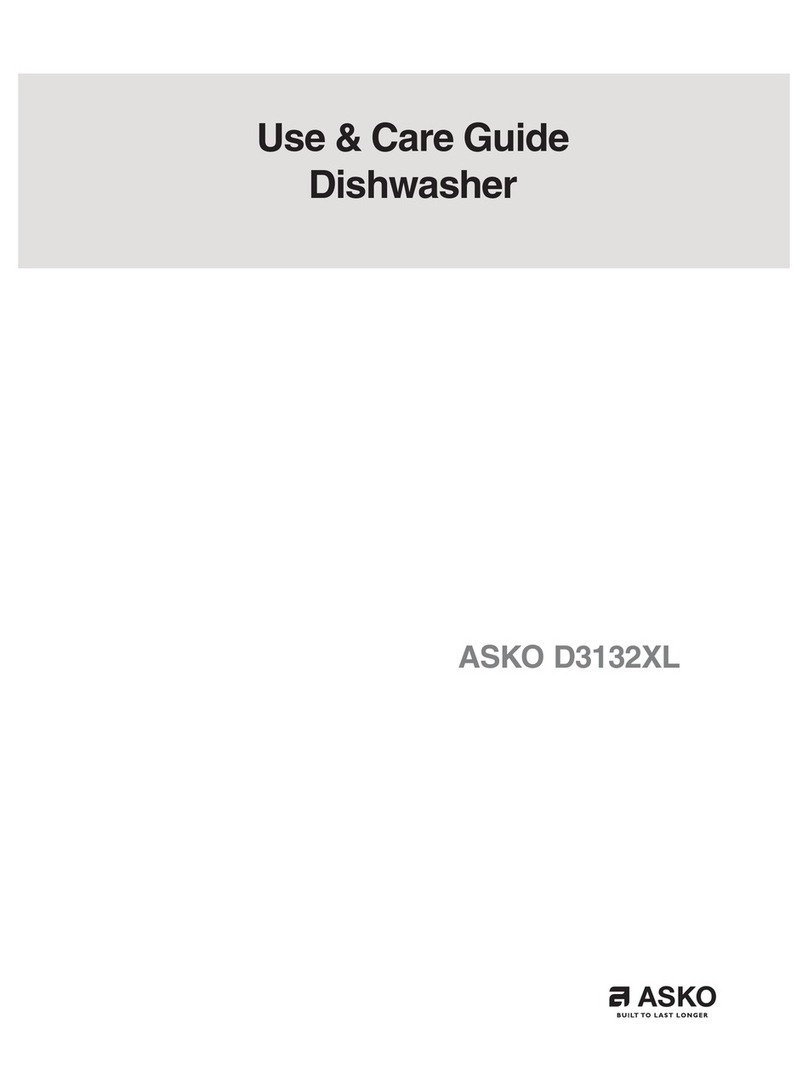
Asko
Asko D3132XL Use and care guide
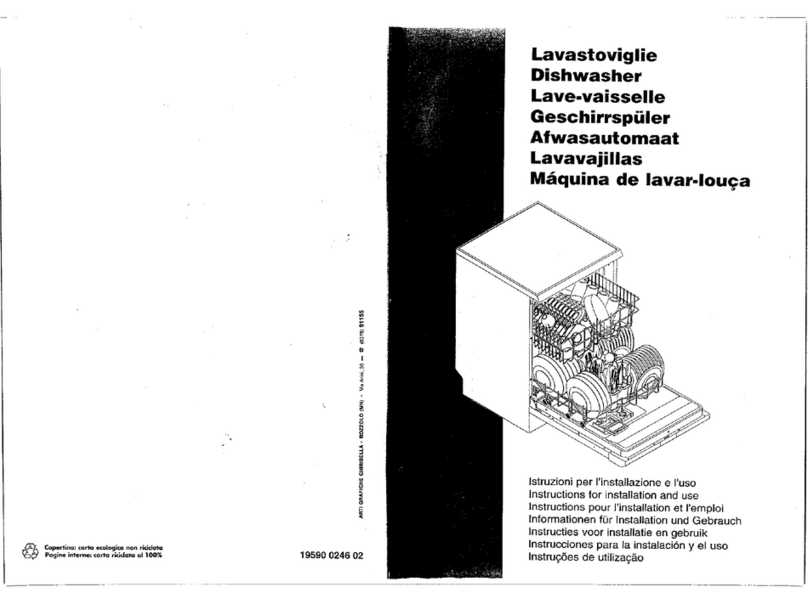
Smeg
Smeg PL964 Istruzioni per l'installazione e l'uso
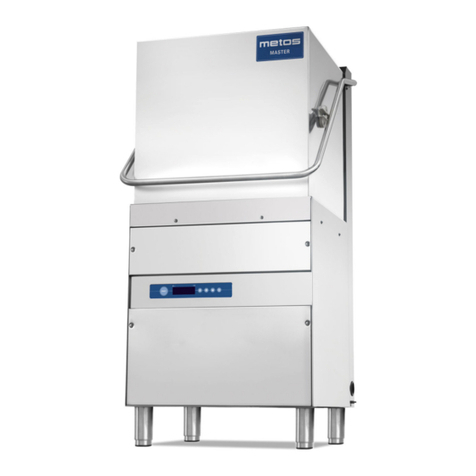
Metos
Metos Master HOOD 130 LUX II Instructions for use and maintenance
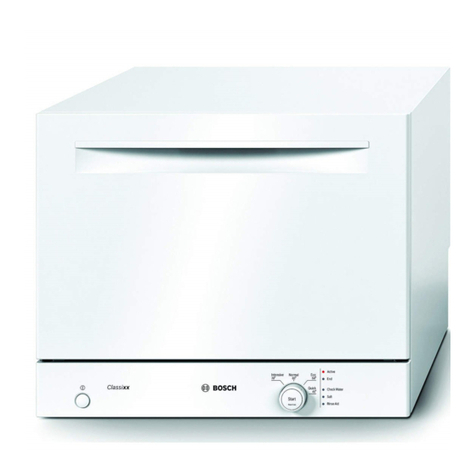
Bosch
Bosch SKS40E02GB operating instructions
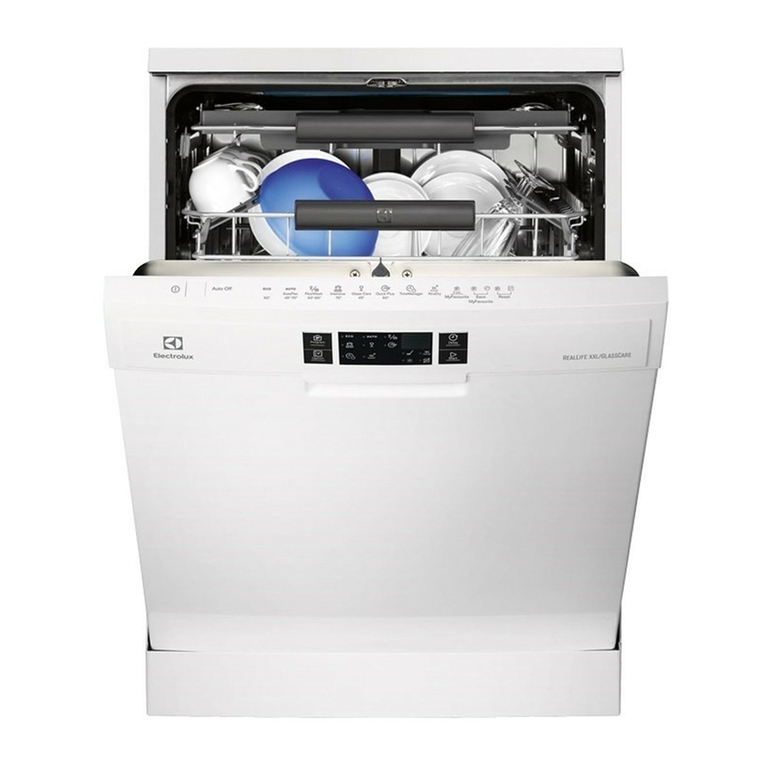
Electrolux
Electrolux ESF8635ROW user manual
